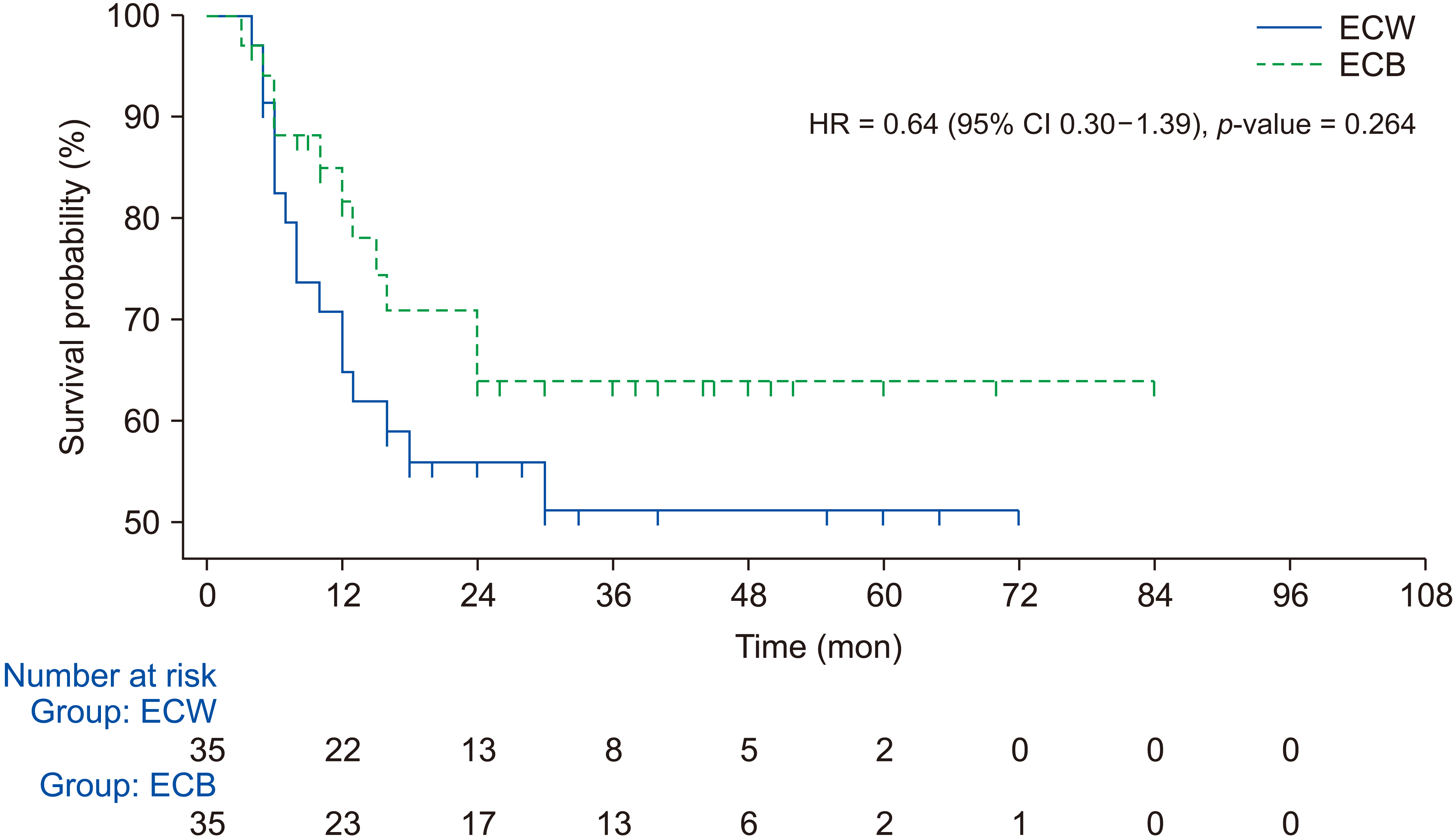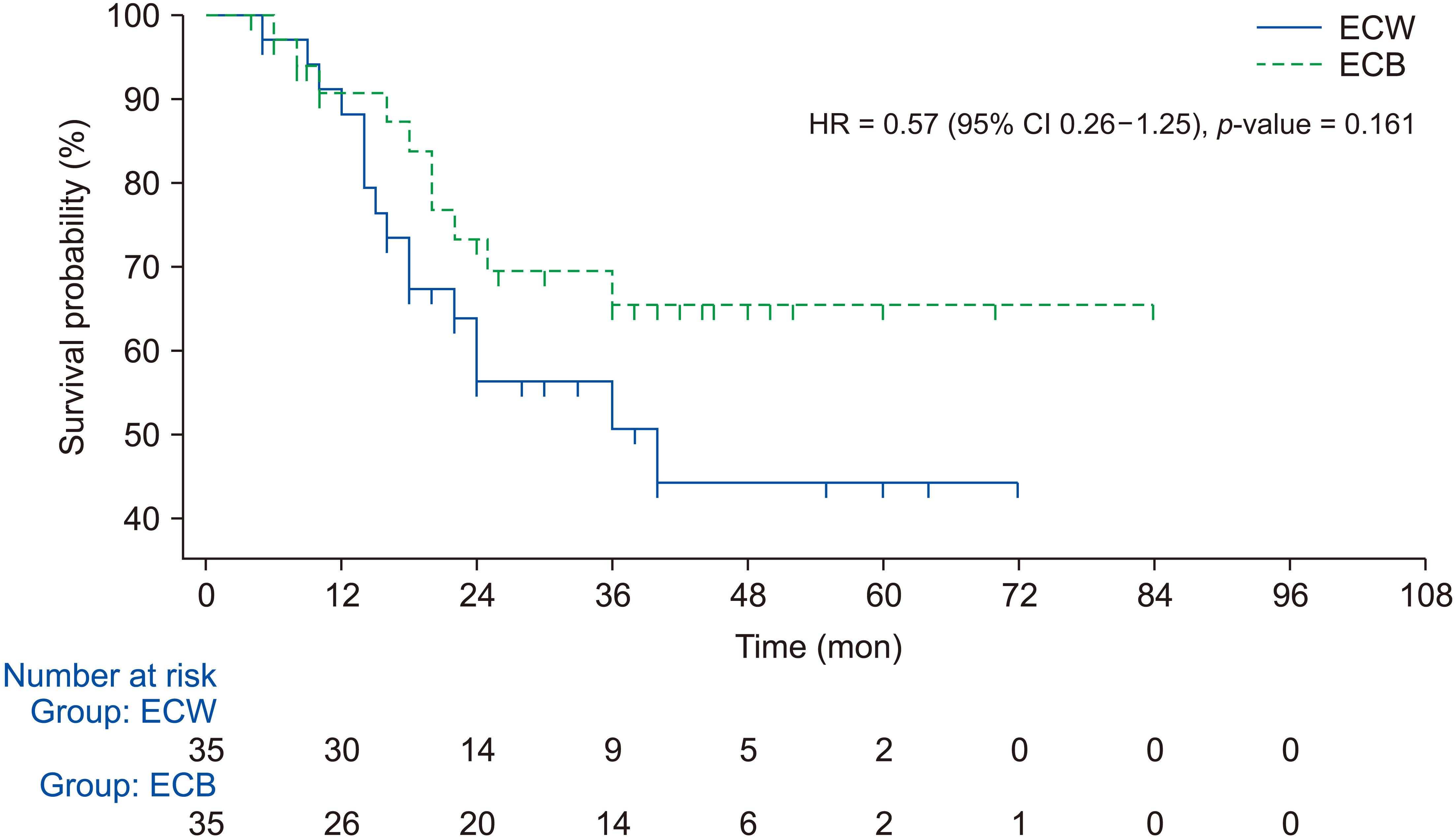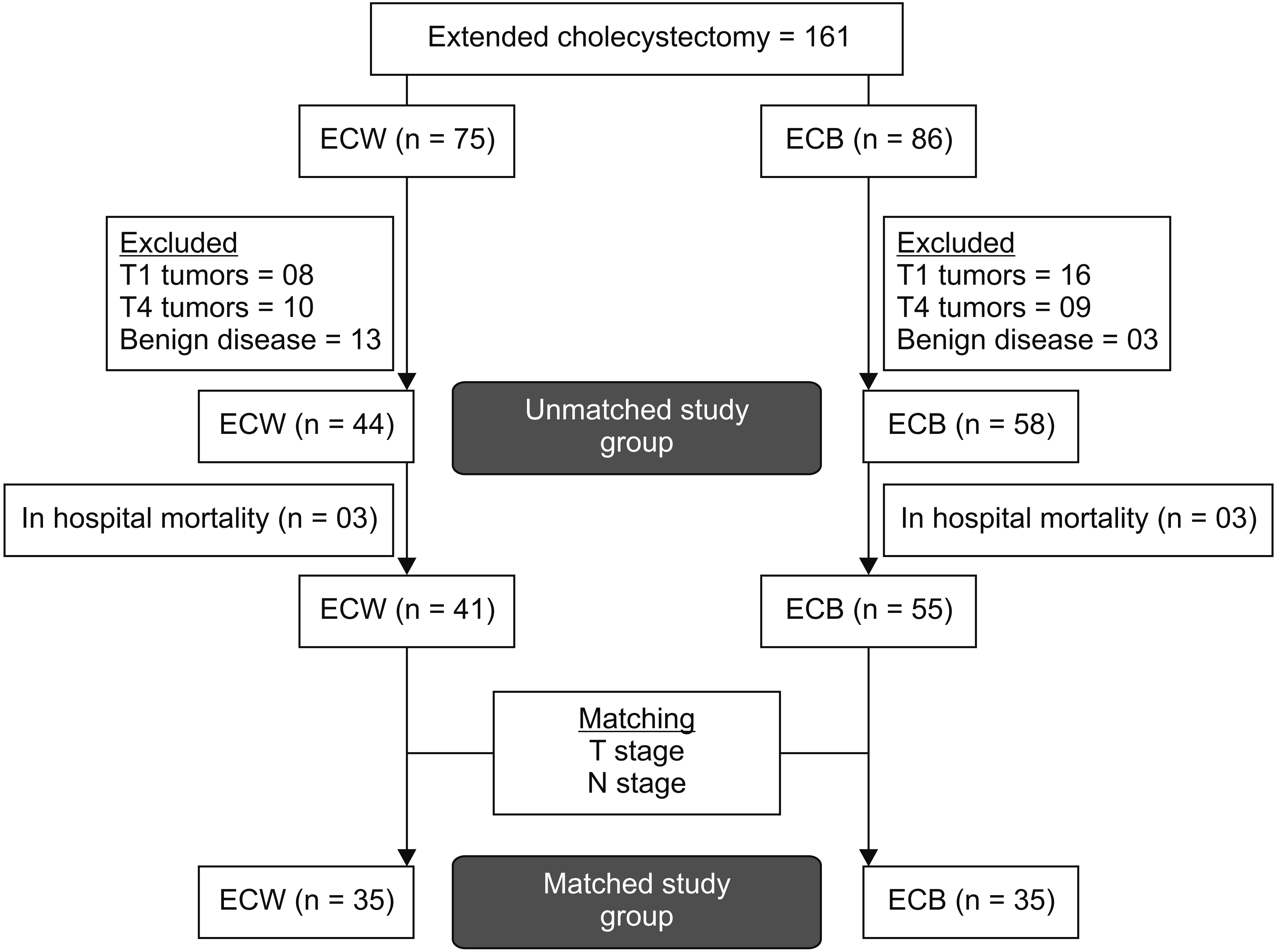1. Jarnagin WR, Allen PJ, Chapman WC, D'Angelica MI, DeMatteo RP, Gian RK, et al. 2017. Blumgart's surgery of the liver, biliary tract and pancreas. 6th ed. Elsevier;Philadelphia: p. 786–804.
2. Boerma EJ. 1994; Towards an oncological resection of gall bladder cancer. Eur J Surg Oncol. 20:537–544. PMID:
7926055.
3. Yoshikawa T, Araida T, Azuma T, Takasaki K. 1998; Bisubsegmental liver resection for gallbladder cancer. Hepatogastroenterology. 45:14–19. PMID:
9496479.
4. Reddy SK, Marroquin CE, Kuo PC, Pappas TN, Clary BM. 2007; Extended hepatic resection for gallbladder cancer. Am J Surg. 194:355–361. DOI:
10.1016/j.amjsurg.2007.02.013. PMID:
17693282.

5. Benson AB 3rd, Abrams TA, Ben-Josef E, Bloomston PM, Botha JF, Clary BM, et al. 2009; NCCN clinical practice guidelines in oncology: hepatobiliary cancers. J Natl Compr Canc Netw. 7:350–391. DOI:
10.6004/jnccn.2009.0027. PMID:
19406039. PMCID:
PMC4461147.
6. Ohtsuka M, Miyazaki M, Itoh H, Nakagawa K, Ambiru S, Shimizu H, et al. 1998; Routes of hepatic metastasis of gallbladder carcinoma. Am J Clin Pathol. 109:62–68. DOI:
10.1093/ajcp/109.1.62. PMID:
9426519.

7. Endo I, Takimoto A, Fujii Y, Togo S, Shimada H. 1998; [Hepatic resection for advanced carcinoma of the gallbladder]. Nihon Geka Gakkai Zasshi. 99:711–716. Japanese. PMID:
9866836.
8. Suzuki M, Yamamoto K, Unno M, Katayose Y, Endo K, Oikawa M, et al. 2000; Detection of perfusion areas of the gallbladder vein on computed tomography during arterial portography (CTAP)--the background for dual S4a.S5 hepatic subsegmentectomy in advanced gallbladder carcinoma. Hepatogastroenterology. 47:631–635. PMID:
10919001.
9. Araida T, Higuchi R, Hamano M, Kodera Y, Takeshita N, Ota T, et al. 2009; Hepatic resection in 485 R0 pT2 and pT3 cases of advanced carcinoma of the gallbladder: results of a Japanese Society of Biliary Surgery survey--a multicenter study. J Hepatobiliary Pancreat Surg. 16:204–215. DOI:
10.1007/s00534-009-0044-3. PMID:
19219399.

10. Horiguchi A, Miyakawa S, Ishihara S, Miyazaki M, Ohtsuka M, Shimizu H, et al. 2013; Gallbladder bed resection or hepatectomy of segments 4a and 5 for pT2 gallbladder carcinoma: analysis of Japanese registration cases by the study group for biliary surgery of the Japanese Society of Hepato-Biliary-Pancreatic Surgery. J Hepatobiliary Pancreat Sci. 20:518–524. DOI:
10.1007/s00534-012-0584-9. PMID:
23430053.

12. Amin MB, Edge SB, Greene FL, Byrd DR, Brookland RK, Washington MK, et al. 2017. AJCC cancer staging manual. 8th ed. Springer;New York: p. 303–309. DOI:
10.1007/978-3-319-40618-3.
13. Dindo D, Demartines N, Clavien PA. 2004; Classification of surgical complications: a new proposal with evaluation in a cohort of 6336 patients and results of a survey. Ann Surg. 240:205–213. DOI:
10.1097/01.sla.0000133083.54934.ae. PMID:
15273542. PMCID:
PMC1360123.
14. Nag HH, Raj P, Sisodia K. 2018; The technique of laparoscopic hepatic bisegmentectomy with regional lymphadenectomy for gallbladder cancer. J Minim Access Surg. 14:124–129. DOI:
10.4103/jmas.JMAS_181_16. PMID:
28928327. PMCID:
PMC5869971.

15. Uesaka K, Yasui K, Morimoto T, Torii A, Yamamura Y, Kodera Y, et al. 1996; Visualization of routes of lymphatic drainage of the gallbladder with a carbon particle suspension. J Am Coll Surg. 183:345–350. PMID:
8843263.
16. Yoshimitsu K, Honda H, Kaneko K, Kuroiwa T, Irie H, Chijiiwa K, et al. 1997; Anatomy and clinical importance of cholecystic venous drainage: helical CT observations during injection of contrast medium into the cholecystic artery. AJR Am J Roentgenol. 169:505–510. DOI:
10.2214/ajr.169.2.9242765. PMID:
9242765.

17. Yoshimitsu K, Honda H, Kuroiwa T, Irie H, Aibe H, Tajima T, et al. 2001; Liver metastasis from gallbladder carcinoma: anatomic correlation with cholecystic venous drainage demonstrated by helical computed tomography during injection of contrast medium in the cholecystic artery. Cancer. 92:340–348. DOI:
10.1002/1097-0142(20010715)92:2<340::AID-CNCR1328>3.0.CO;2-5. PMID:
11466688.
18. Endo I, Shimada H, Takimoto A, Fujii Y, Miura Y, Sugita M, et al. 2004; Microscopic liver metastasis: prognostic factor for patients with pT2 gallbladder carcinoma. World J Surg. 28:692–696. DOI:
10.1007/s00268-004-7289-4. PMID:
15175901.

21. Chijiiwa K, Nakano K, Ueda J, Noshiro H, Nagai E, Yamaguchi K, et al. 2001; Surgical treatment of patients with T2 gallbladder carcinoma invading the subserosal layer. J Am Coll Surg. 192:600–607. DOI:
10.1016/S1072-7515(01)00814-6. PMID:
11333097.

22. Kai M, Chijiiwa K, Ohuchida J, Nagano M, Hiyoshi M, Kondo K. 2007; A curative resection improves the postoperative survival rate even in patients with advanced gallbladder carcinoma. J Gastrointest Surg. 11:1025–1032. DOI:
10.1007/s11605-007-0181-4. PMID:
17508256.

23. Wakai T, Shirai Y, Sakata J, Nagahashi M, Ajioka Y, Hatakeyama K. 2010; Mode of hepatic spread from gallbladder carcinoma: an immunohistochemical analysis of 42 hepatectomized specimens. Am J Surg Pathol. 34:65–74. DOI:
10.1097/PAS.0b013e3181c467d4. PMID:
19956061.

24. D'Angelica M, Dalal KM, DeMatteo RP, Fong Y, Blumgart LH, Jarnagin WR. 2009; Analysis of the extent of resection for adenocarcinoma of the gallbladder. Ann Surg Oncol. 16:806–816. DOI:
10.1245/s10434-008-0189-3. PMID:
18985272.
26. Kasumova GG, Tabatabaie O, Najarian RM, Callery MP, Ng SC, Bullock AJ, et al. 2017; Surgical management of gallbladder cancer: simple versus extended cholecystectomy and the role of adjuvant therapy. Ann Surg. 266:625–631. DOI:
10.1097/SLA.0000000000002385. PMID:
28692469.
27. Jang JY, Han HS, Yoon YS, Cho JY, Choi Y. 2019; Retrospective comparison of outcomes of laparoscopic and open surgery for T2 gallbladder cancer - thirteen-year experience. Surg Oncol. 29:142–147. DOI:
10.1016/j.suronc.2019.05.007. PMID:
31196480.

28. Nag HH, Sachan A, Nekarakanti PK. 2021; Laparoscopic versus open extended cholecystectomy with bi-segmentectomy (s4b and s5) in patients with gallbladder cancer. J Minim Access Surg. 17:21–27. DOI:
10.4103/jmas.JMAS_98_19. PMID:
31603079. PMCID:
PMC7945642.







 PDF
PDF Citation
Citation Print
Print




 XML Download
XML Download